Abstract
In addition to copper bound to ceruloplasmin and to albumin, there is a third small fraction of copper in human serum that is bound to amino acids. The amino acid-bound fraction of copper is in equilibrium with albumin-bound copper, and both fractions are probably in equilibrium with ionic copper.
Of the 23 amino acids that are known to be in human serum, a substantial number were shown (in physiological concentrations) to compete effectively with albumin for the binding of copper. In this respect, histidine had the most marked effect followed by glutamine, threonine, cystine, and others. The effect of the combined presence of 23 amino acids on the state of copper in human serum could not be explained on the basis of their individual abilities to compete with albumin for the binding of copper. It is suggested that copper may also be present in serum in the form of mixed amino acid-copper complexes consisting of one atom of copper and two different amino acids. Under normal conditions, histidine is the amino acid primarily involved in the formation of mixed amino acid-copper complexes in serum. In combination with histidine and copper, threonine, glutamine, and asparagine are the other amino acids that are most likely to be the third members of these mixed complexes.
The first binding site for copper on human albumin is different from subsequent ones in that its binding affinity to copper is much higher. We propose that the amino acid-bound fraction of copper in serum may have a physiological role in the biological transport of copper.
Full text
PDF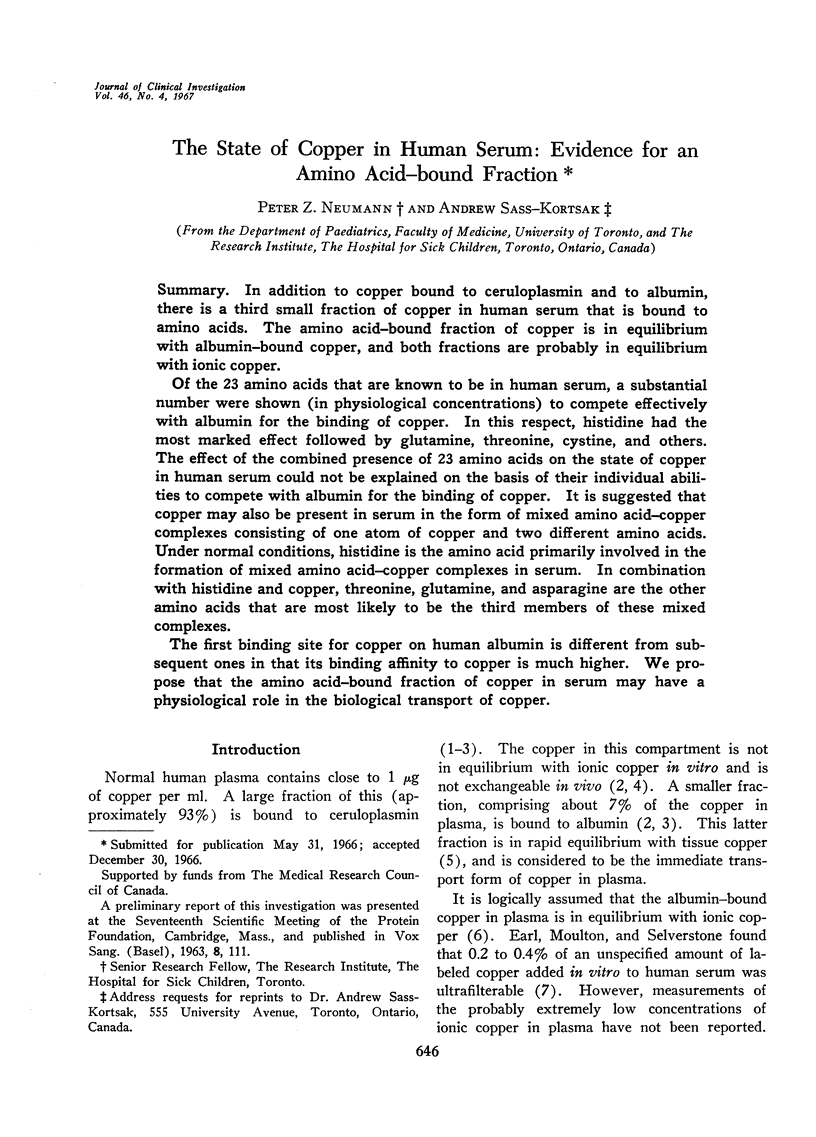
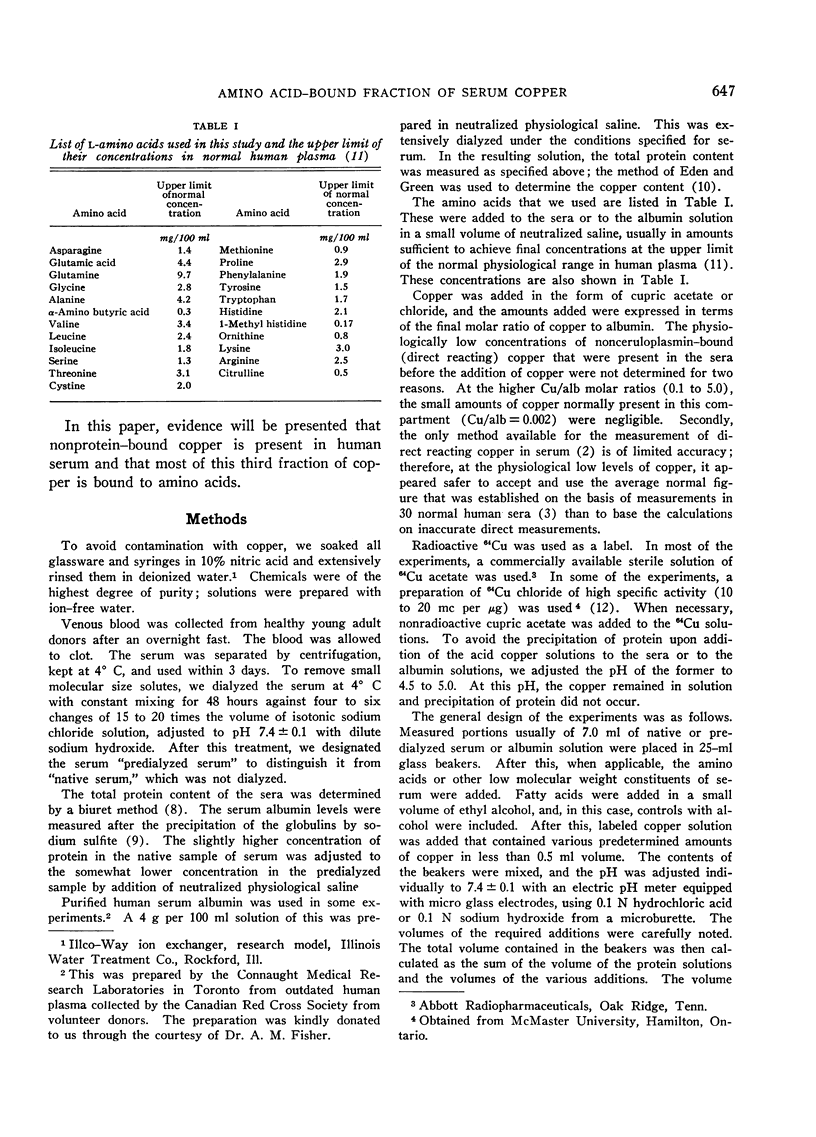
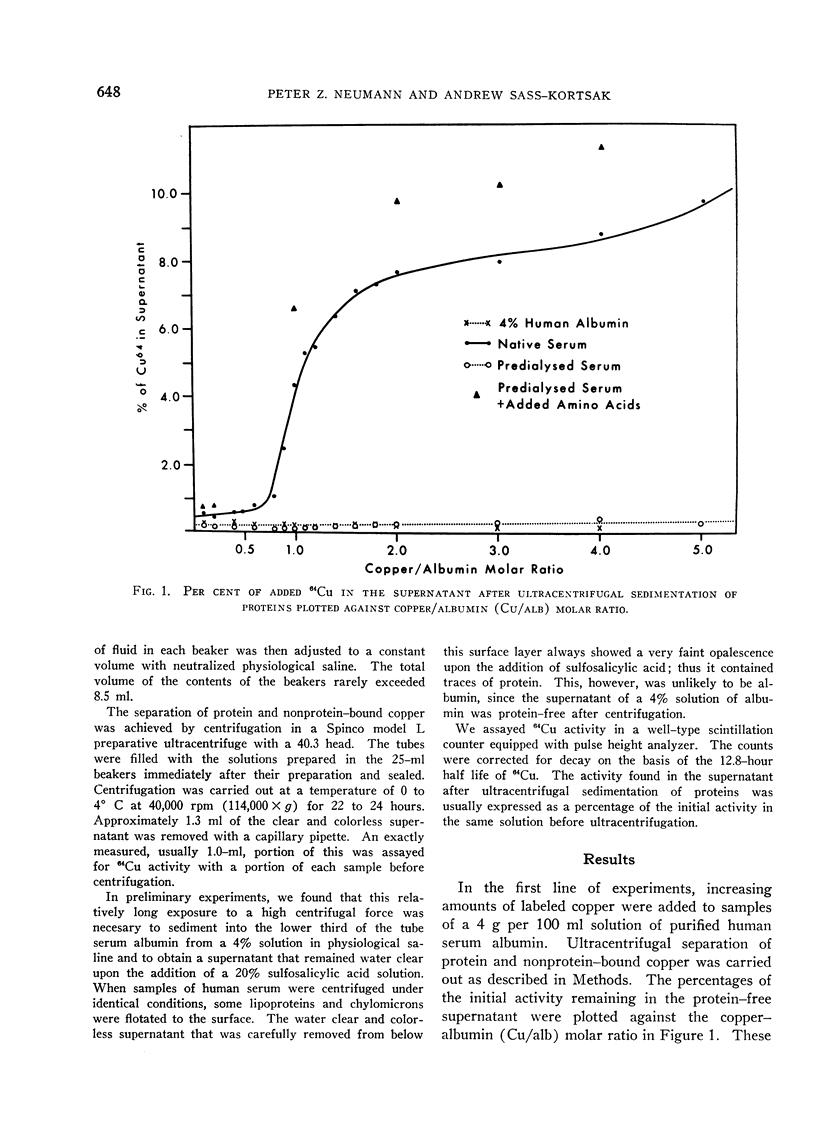
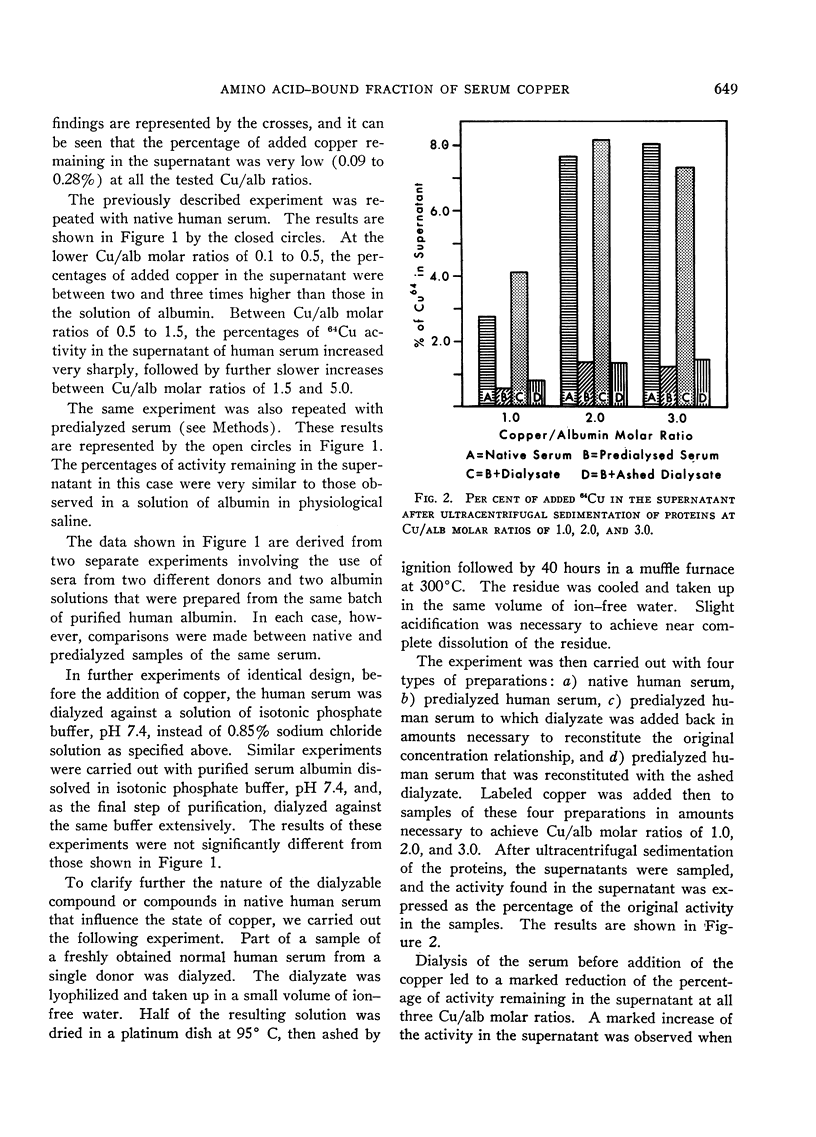
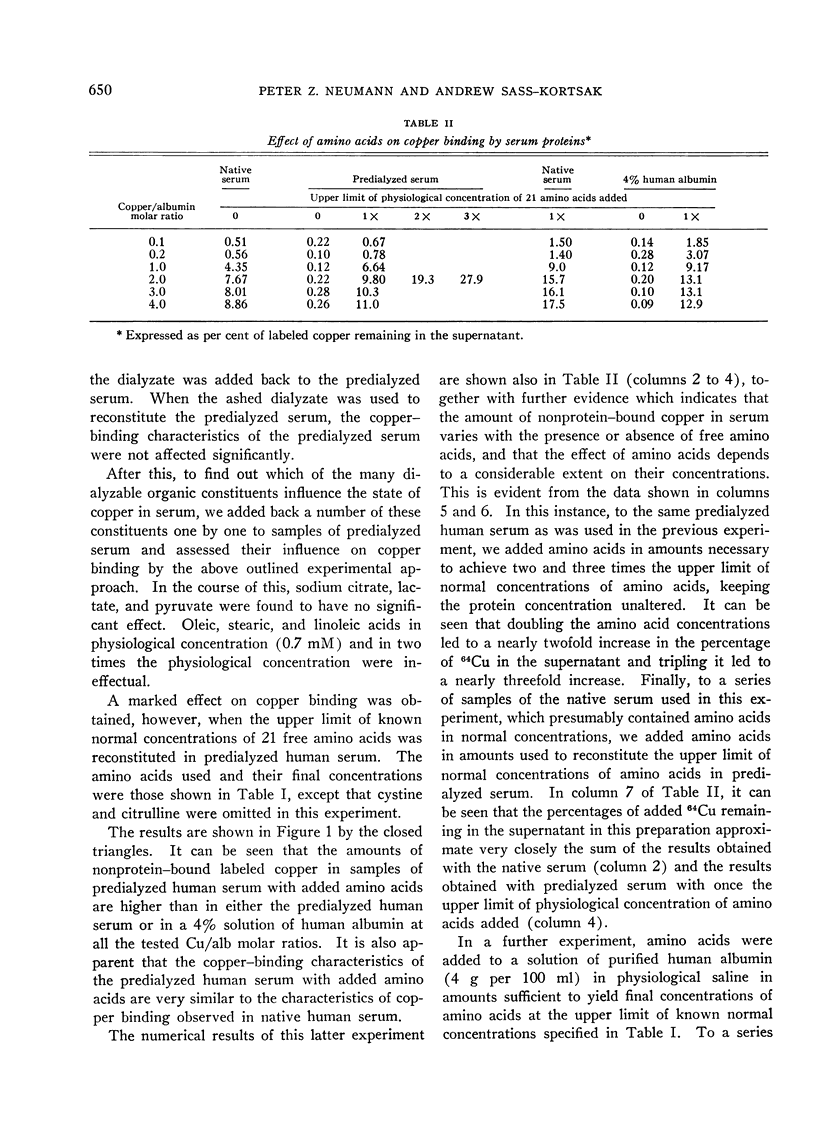
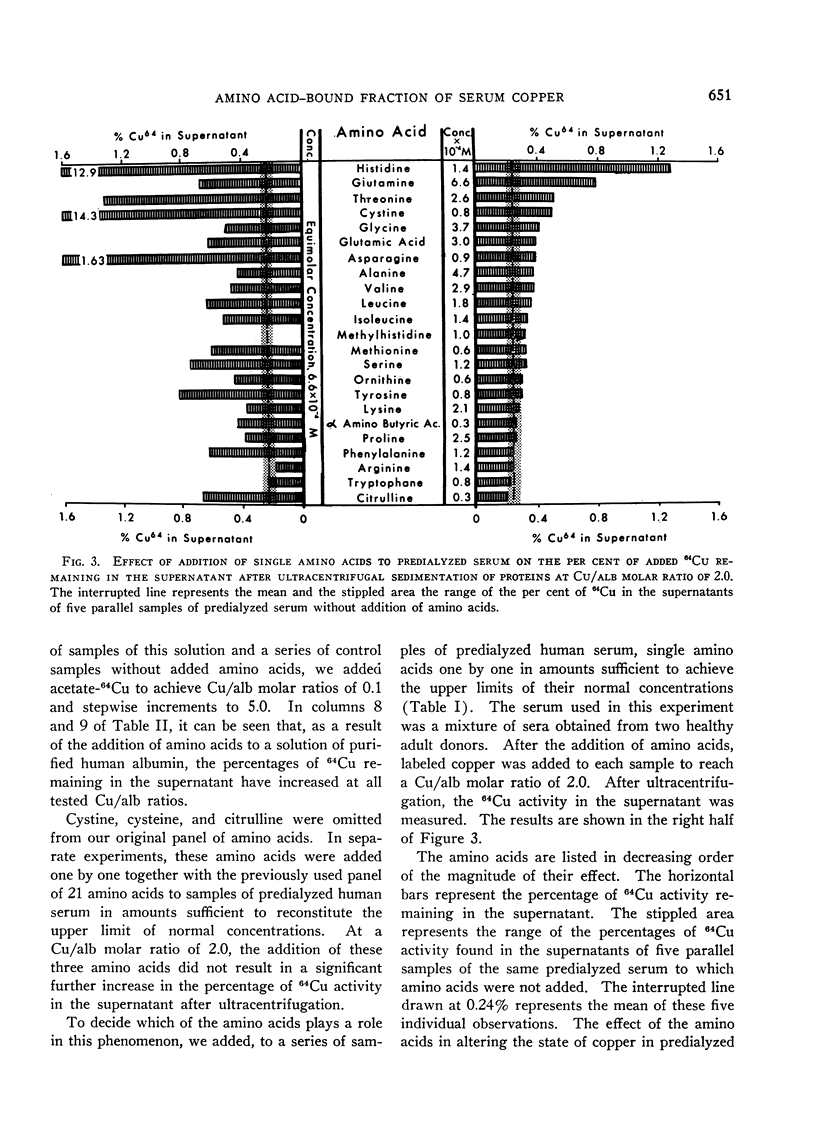
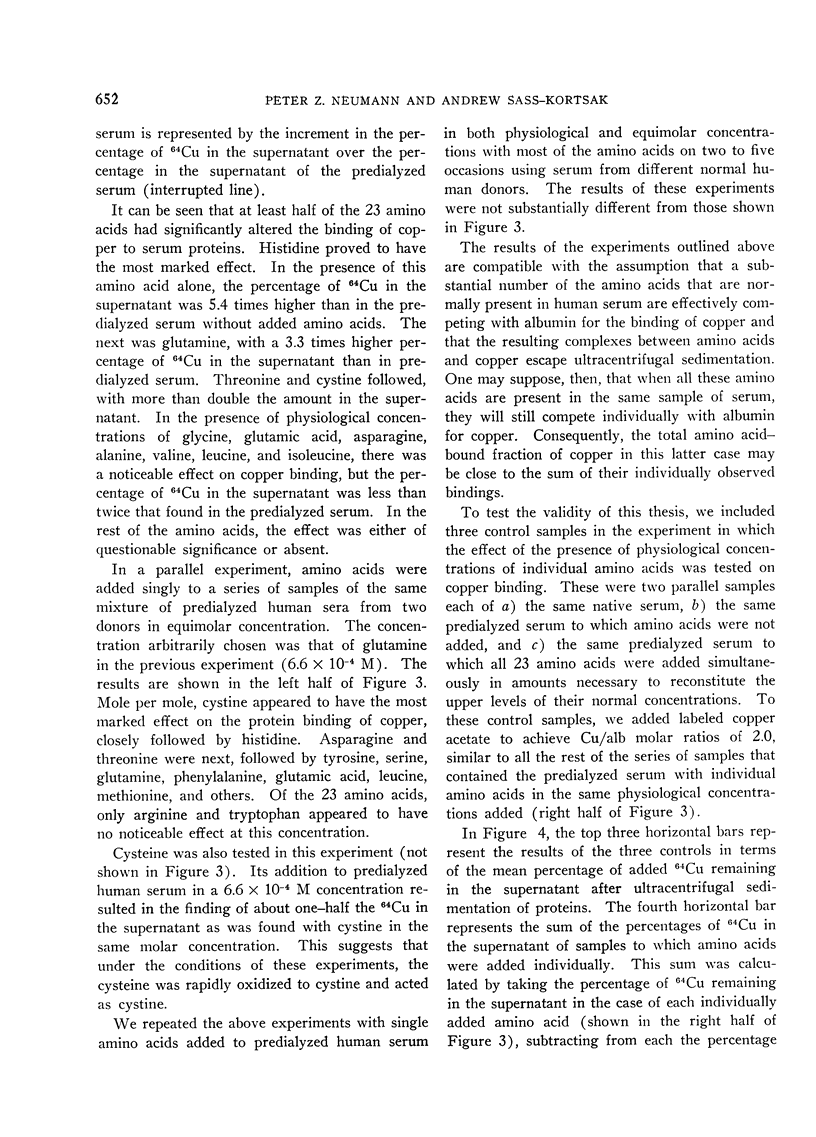
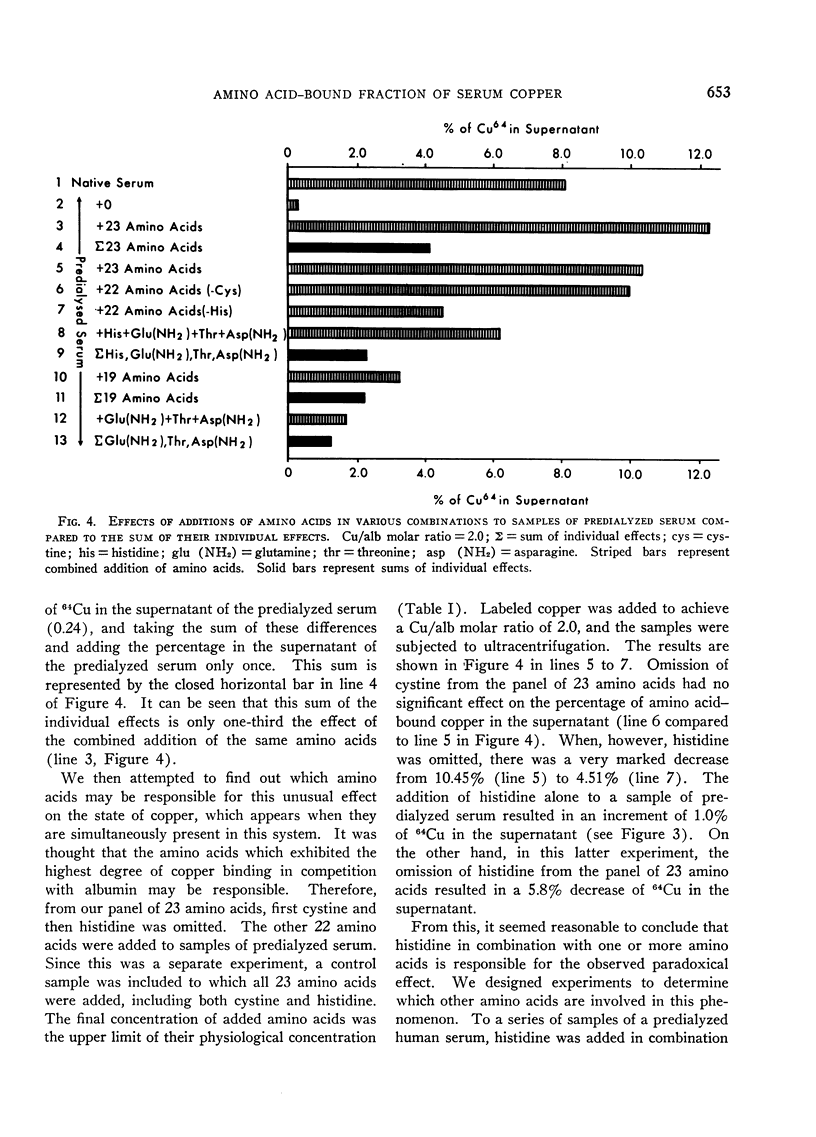
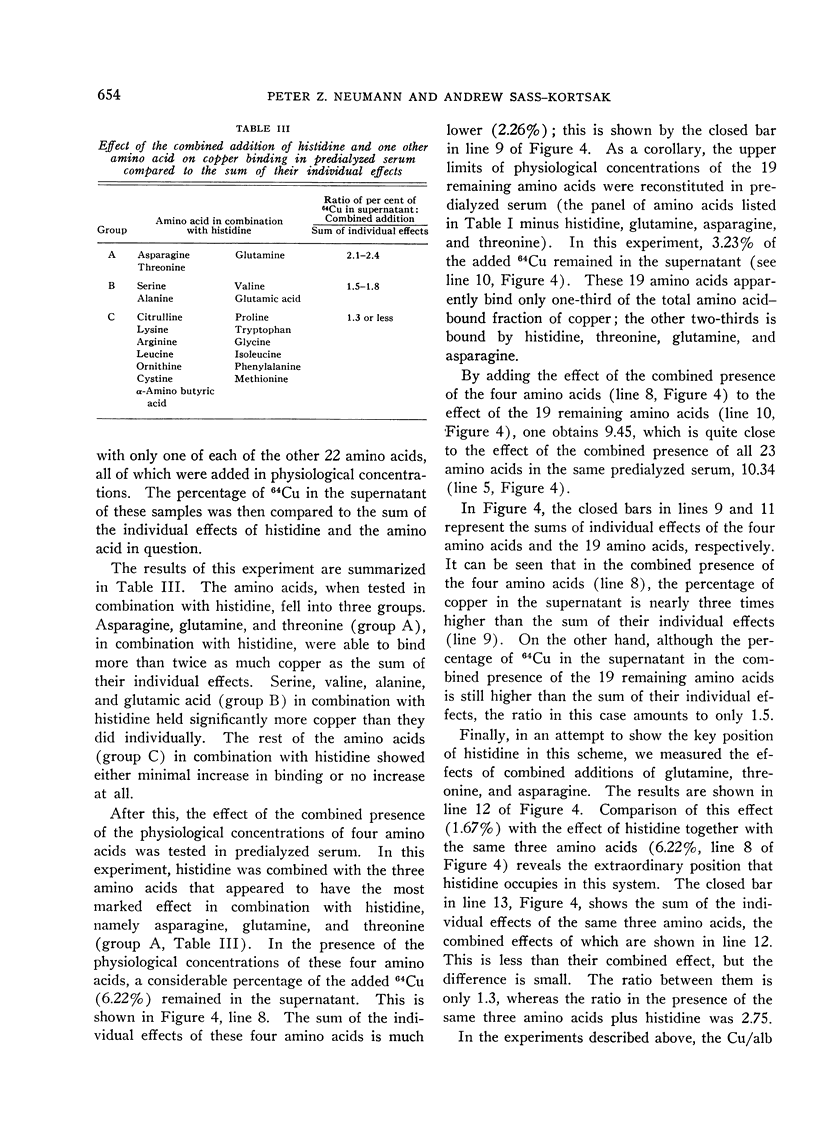
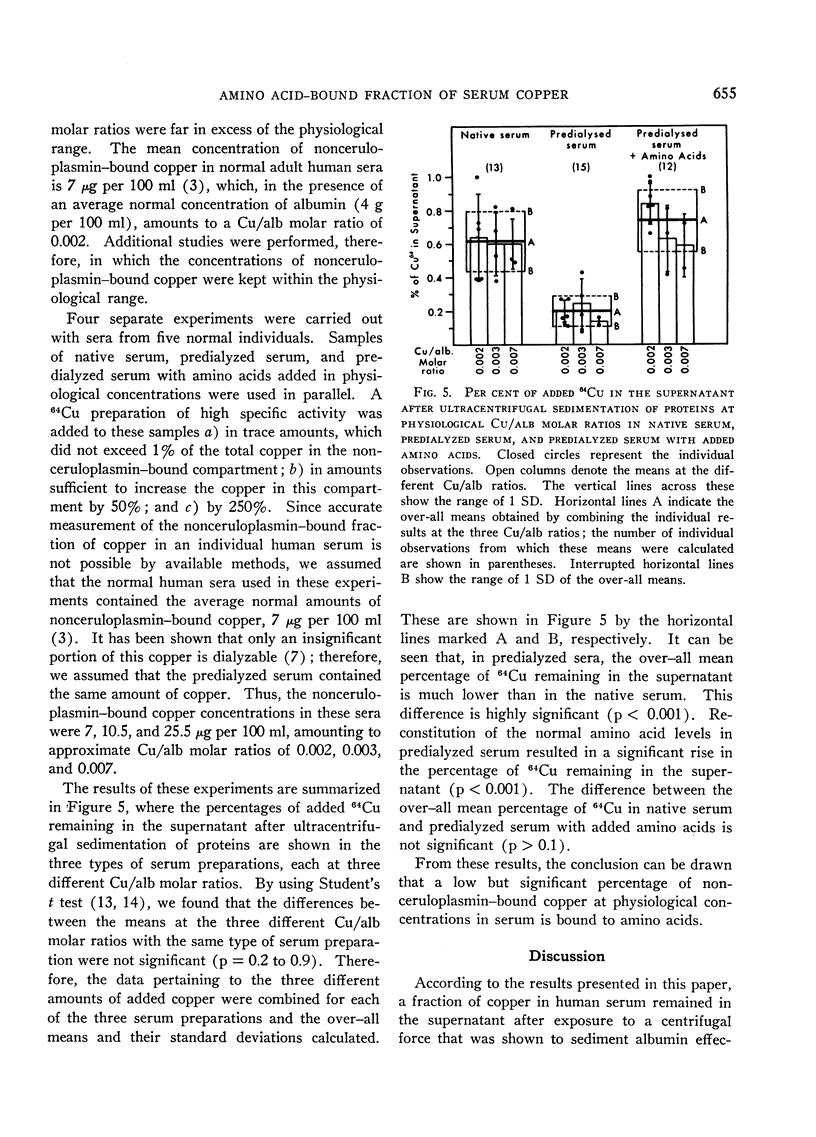
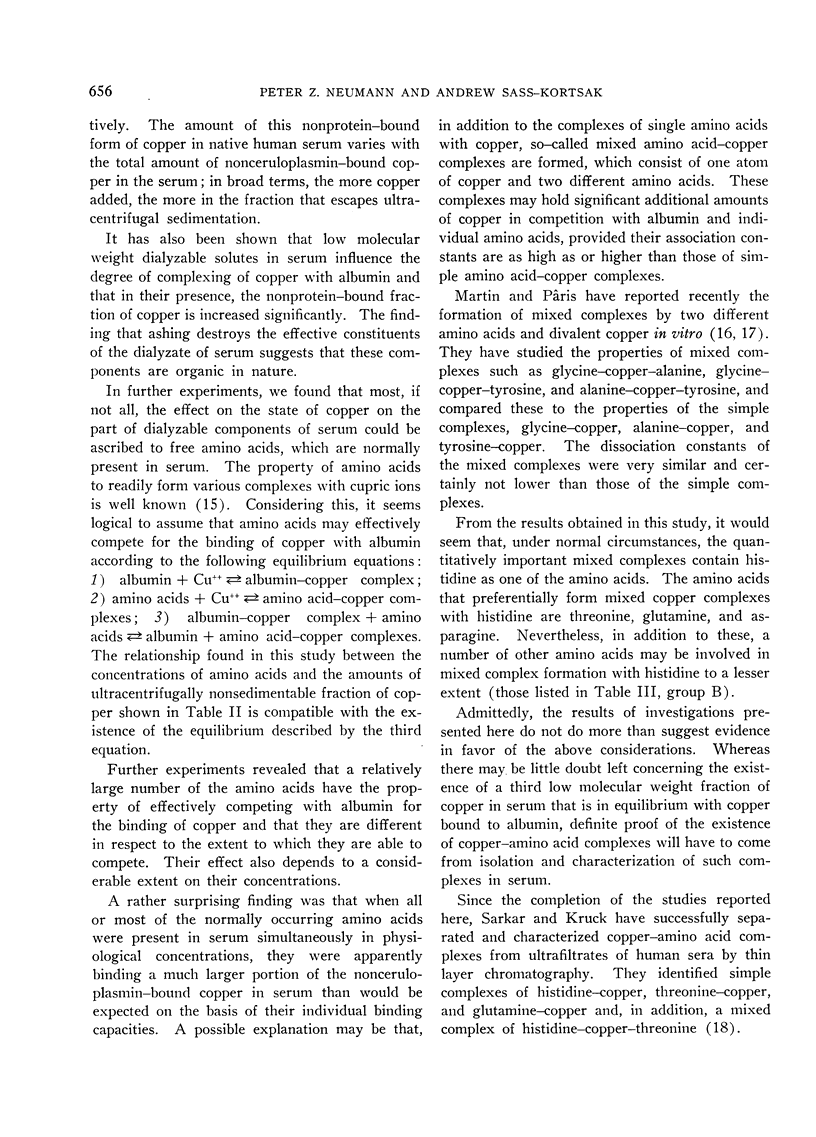
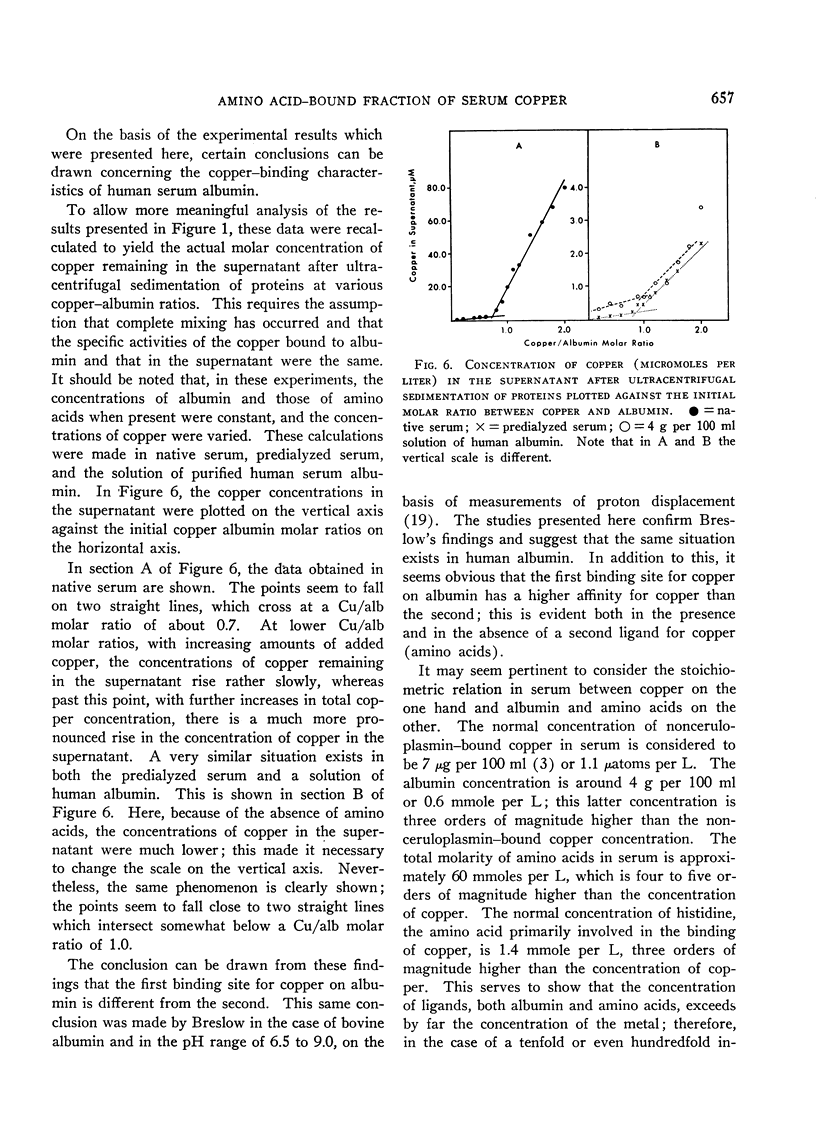
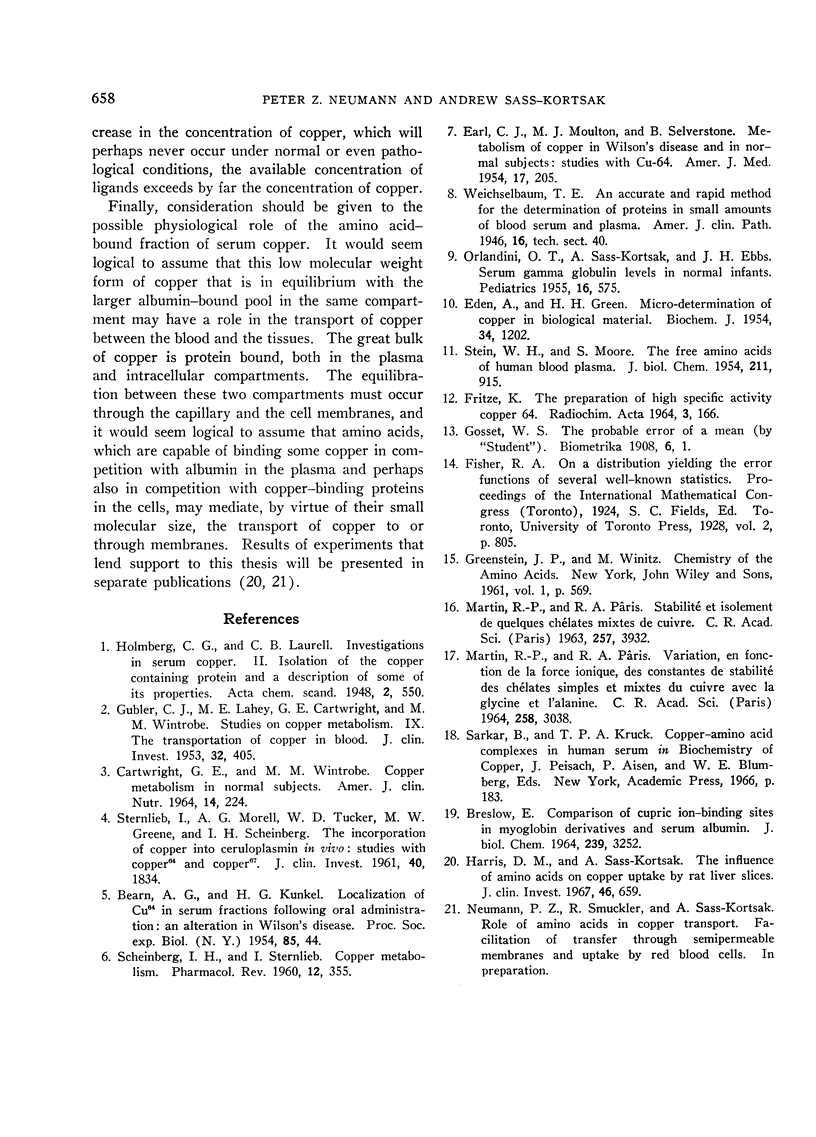
Selected References
These references are in PubMed. This may not be the complete list of references from this article.
- BRESLOW E. COMPARISON OF CUPRIC ION-BINDING SITES IN MYOGLOBIN DERIVATIVES AND SERUM ALBUMIN. J Biol Chem. 1964 Oct;239:3252–3259. [PubMed] [Google Scholar]
- CARTWRIGHT G. E., WINTROBE M. M. COPPER METABOLISM IN NORMAL SUBJECTS. Am J Clin Nutr. 1964 Apr;14:224–232. doi: 10.1093/ajcn/14.4.224. [DOI] [PubMed] [Google Scholar]
- EARL C. J., MOULTON M. J., SELVERSTONE B. Metabolism of copper in Wilson's disease and in normal subjects; studies with Cu-64. Am J Med. 1954 Aug;17(2):205–213. doi: 10.1016/0002-9343(54)90258-2. [DOI] [PubMed] [Google Scholar]
- Eden A., Green H. H. Micro-determination of copper in biological material. Biochem J. 1940 Sep;34(8-9):1202–1208. doi: 10.1042/bj0341202. [DOI] [PMC free article] [PubMed] [Google Scholar]
- GUBLER C. J., LAHEY M. E., CARTWRIGHT G. E., WINTROBE M. M. Studies on copper metabolism. IX. The transportation of copper in blood. J Clin Invest. 1953 May;32(5):405–414. doi: 10.1172/JCI102752. [DOI] [PMC free article] [PubMed] [Google Scholar]
- Harris D. I., Sass-Kortsak A. The influence of amino acids on copper uptake by rat liver slices. J Clin Invest. 1967 Apr;46(4):659–667. doi: 10.1172/JCI105567. [DOI] [PMC free article] [PubMed] [Google Scholar]
- ORLANDINI O., SASS-KORTSAK A., EBBS J. H. Serum gamma globulin levels in normal infants. Pediatrics. 1955 Nov;16(5):575–584. [PubMed] [Google Scholar]
- SCHEINBERG I. H., STERNLIEB I. Copper metabolism. Pharmacol Rev. 1960 Sep;12:355–381. [PubMed] [Google Scholar]
- STEIN W. H., MOORE S. The free amino acids of human blood plasma. J Biol Chem. 1954 Dec;211(2):915–926. [PubMed] [Google Scholar]
- Sternlieb I., Morell A. G., Tucker W. D., Greene M. W., Scheinberg I. H. THE INCORPORATION OF COPPER INTO CERULOPLASMIN IN VIVO: STUDIES WITH COPPER AND COPPER. J Clin Invest. 1961 Oct;40(10):1834–1840. doi: 10.1172/JCI104407. [DOI] [PMC free article] [PubMed] [Google Scholar]


